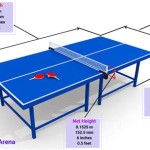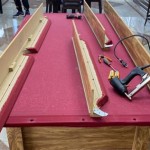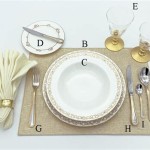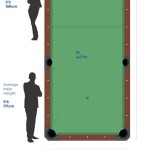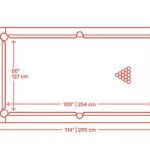```html
Zinc Dining Room Tables: A Comprehensive Guide
Zinc dining room tables have emerged as a compelling choice for homeowners seeking a blend of industrial chic aesthetics and enduring durability. This article provides a detailed examination of zinc dining room tables, covering their composition, advantages, design considerations, maintenance requirements, and factors influencing their cost.
Understanding Zinc and Its Applications in Furniture
Zinc is a metallic element recognized for its corrosion resistance, malleability, and relatively low melting point. Its protective properties are attributed to the formation of a zinc carbonate layer upon exposure to air, effectively preventing further oxidation. This inherent resistance to rust and decay makes zinc a valuable material in various applications, including construction, automotive manufacturing, and, increasingly, furniture design.
In the context of dining room tables, zinc is typically employed as a tabletop surface, often paired with a solid wood or metal base. The zinc sheet is carefully applied to a substrate, such as plywood or MDF (Medium-Density Fiberboard), providing structural support and stability. The resulting tabletop offers a unique combination of visual appeal and functional benefits.
Advantages of Zinc Dining Room Tables
Zinc dining room tables offer several distinct advantages that contribute to their growing popularity:
Durability: As previously mentioned, zinc boasts exceptional corrosion resistance. This inherent property translates to a long-lasting tabletop surface that can withstand daily wear and tear without succumbing to rust or degradation. This is particularly beneficial in dining environments where spills and moisture exposure are common occurrences.
Unique Aesthetic Appeal: The natural patina of zinc imparts a distinctive industrial-chic aesthetic to any dining room. The surface typically exhibits subtle variations in color and texture, adding character and visual interest. These imperfections are often embraced as part of the material's inherent charm. Furthermore, the metal's cool, neutral tone complements a wide range of decorating styles, from minimalist to rustic.
Low Maintenance: Zinc tabletops are relatively easy to maintain. Regular cleaning with a mild soap and water solution is generally sufficient to keep the surface looking its best. Avoid using abrasive cleaners or harsh chemicals, as these can damage the patina and leave unsightly scratches. Periodic waxing can help protect the surface and enhance its luster, although this is not strictly necessary.
Antimicrobial Properties: Zinc inherently possesses antimicrobial properties, inhibiting the growth of bacteria and other microorganisms. This characteristic makes zinc dining room tables a hygienic choice for food preparation and dining environments.
Design Considerations and Styles
Zinc dining room tables are available in a variety of designs and styles to suit diverse preferences. Several factors influence the overall aesthetic and functionality of these tables:
Tabletop Shape and Size: Zinc tabletops can be crafted in various shapes, including rectangular, square, round, and oval. The choice of shape and size should be guided by the dimensions of the dining room and the number of people typically accommodated at the table. Rectangular tables are well-suited for larger dining spaces, while round or oval tables can foster a more intimate and social atmosphere.
Base Material and Design: The base of a zinc dining room table can be constructed from various materials, including wood, steel, and cast iron. Wooden bases lend a warm and rustic feel, while steel or cast iron bases contribute to a more industrial or contemporary aesthetic. The design of the base should complement the tabletop and overall style of the dining room.
Edge Details: The edge of the zinc tabletop can be finished in several ways, ranging from a simple, clean edge to a more elaborate rolled or beveled edge. The edge detail can significantly impact the overall look of the table. A clean edge offers a modern and minimalist appeal, while a rolled or beveled edge adds a touch of sophistication and refinement.
Patina and Finish: The patina of zinc can be manipulated during the manufacturing process to achieve different visual effects. Some manufacturers offer pre-patinated zinc tabletops that exhibit a weathered and aged appearance from the outset. Others provide tabletops with a more uniform and polished finish. The choice of patina and finish should align with the desired aesthetic and the overall style of the dining room.
Seating Capacity: Consider carefully the seating capacity of the zinc dining room table. A general guideline is to allow approximately 24 inches of width per person. Also, consider the leg placement of the table base; ensure that the legs do not obstruct seating or cause discomfort.
Maintenance and Care
While zinc tabletops are relatively low maintenance, proper care is essential to preserve their appearance and longevity:
Regular Cleaning: Clean the surface regularly with a soft cloth dampened with a mild soap and water solution. Avoid using abrasive cleaners, scouring pads, or wire brushes, as these can scratch the surface.
Spill Prevention: Wipe up spills promptly to prevent staining or etching. Acids and acidic foods, such as lemon juice and vinegar, can react with zinc and cause discoloration. Consider using placemats and coasters to protect the surface from spills and heat.
Waxing (Optional): Applying a thin coat of wax periodically can help protect the surface and enhance its luster. Use a non-abrasive wax specifically designed for metal surfaces. Follow the manufacturer's instructions carefully.
Avoiding Scratches: While zinc is relatively durable, it is still susceptible to scratches. Avoid placing sharp or abrasive objects directly on the tabletop. Use trivets or hot pads to protect the surface from hot dishes.
Addressing Patina Development: The natural patina of zinc will continue to evolve over time, developing subtle variations in color and texture. This is a normal process and is often considered part of the material's inherent charm. If you prefer a more uniform appearance, you can use a zinc restoration product to remove the patina and restore the original finish. However, this requires careful application and may alter the overall look of the table.
Factors Influencing Cost
The cost of a zinc dining room table can vary significantly depending on several factors:
Tabletop Size and Thickness: Larger and thicker tabletops require more material and labor, leading to higher costs.
Base Material and Design Complexity: Tables with elaborate bases made from high-end materials, such as solid wood or cast iron, will typically be more expensive than those with simpler bases made from less expensive materials.
Manufacturer Reputation and Quality: Tables from reputable manufacturers with established quality control standards tend to command higher prices.
Patina and Finish Options: Pre-patinated or custom-finished zinc tabletops may incur additional costs.
Shipping and Handling: Due to their weight and size, zinc dining room tables can be expensive to ship, especially over long distances.
Prospective buyers should carefully consider these factors when budgeting for a zinc dining room table. Comparing prices from multiple vendors and reading reviews can help ensure that they are getting a fair price for a quality product.
```
Zinc Top Dining Table

Zinc Top Dining Table

Lantern Dining Room Table Home Zinc

Zinc Top Dining Table

Diy Zinc Top Table Applying The Savvy Apron

Bespoke Zinc Edge Dining Table Peppermill Interiors

Zinc Table For Stylish Dining Room Decor

Cottage Dining Room Zinc Table Design Ideas

Diy Zinc Top Kitchen Table Beneath My Heart

Zinc Top Dining Table
Related Posts




